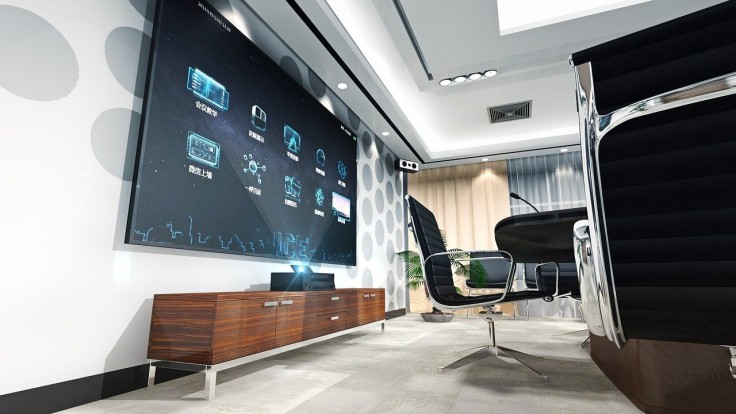
Mounting a flat screen TV can seem like a daunting task, especially after making a large investment on a new TV. You want to make sure this expensive equipment is protected and mounted in the right space. The first step to mounting a television is choosing the proper TV mount. These are the most important things to consider when choosing the right mount for you:
Type of Wall
The material and construction of the wall you're mounting on will impact the type of mount you need to hold your TV safely. Mounts will include different kinds of hardware for different installation processes. Typically, you will be mounting on either concrete or wooden studs. If your wall has studs, ensure that the mount supports studs spacing or single stud installation. This means it will come with wood screws or lag bolts. For concrete walls, you may not be able to find a mount that includes the proper hardware. In this case, consult a local hardware store to get the right materials, such as red head wedge anchors or tap con anchors. Some walls feature metal studs, in which case you will need toggle bolts.
TV Size and Weight
The most important part of choosing a TV mount is finding the correct size for your TV. Most mounts have a range of sizes they can support, so be sure your TV falls within the range. Additionally, ensure that the weight of your TV does not exceed the maximum weight limit of the mount. The last thing you want is to see your new flat screen TV come crashing to the floor.
Mount Flexibility
There are a variety of mount styles that offer different TV angles, depending on where you want your TV located. Most electronics providers like Selby offer varied mount types for all TV sizes. These are the main options for different mounting positions:
Fixed mounts: A fixed mount offers no mobility, but it is often desired because it holds your TV flush to the wall. These are a great option if you don't plan on adjusting your TV, or if it is mounted in the middle of a large wall at standard eye level. Having full lighting control of the room is also important for fixed mounts, since you are unable to adjust for glare. There are different styles of mounts for mounting in a corner versus flat on a wall.
Tilting mounts: A tilting mount allows for vertical adjustments, but the TV remains in the same position on the wall. These are suitable for TV placement above eye level, such as above a fireplace. They also can provide some glare adjustment if sunlight shines on the TV at some points in the day.
Swingarm mounts: Full motion mounts feature an adjustable arm that allows for vertical and horizontal adjustment. These are recommended if you may watch TV from multiple viewing points, or for rooms with high sunlight exposure to avoid glare. While these mounts offer maximum function and accessibility, they appear larger and more visible than a flush fixed mount. Additionally, consider the visibility of cables and wires.









